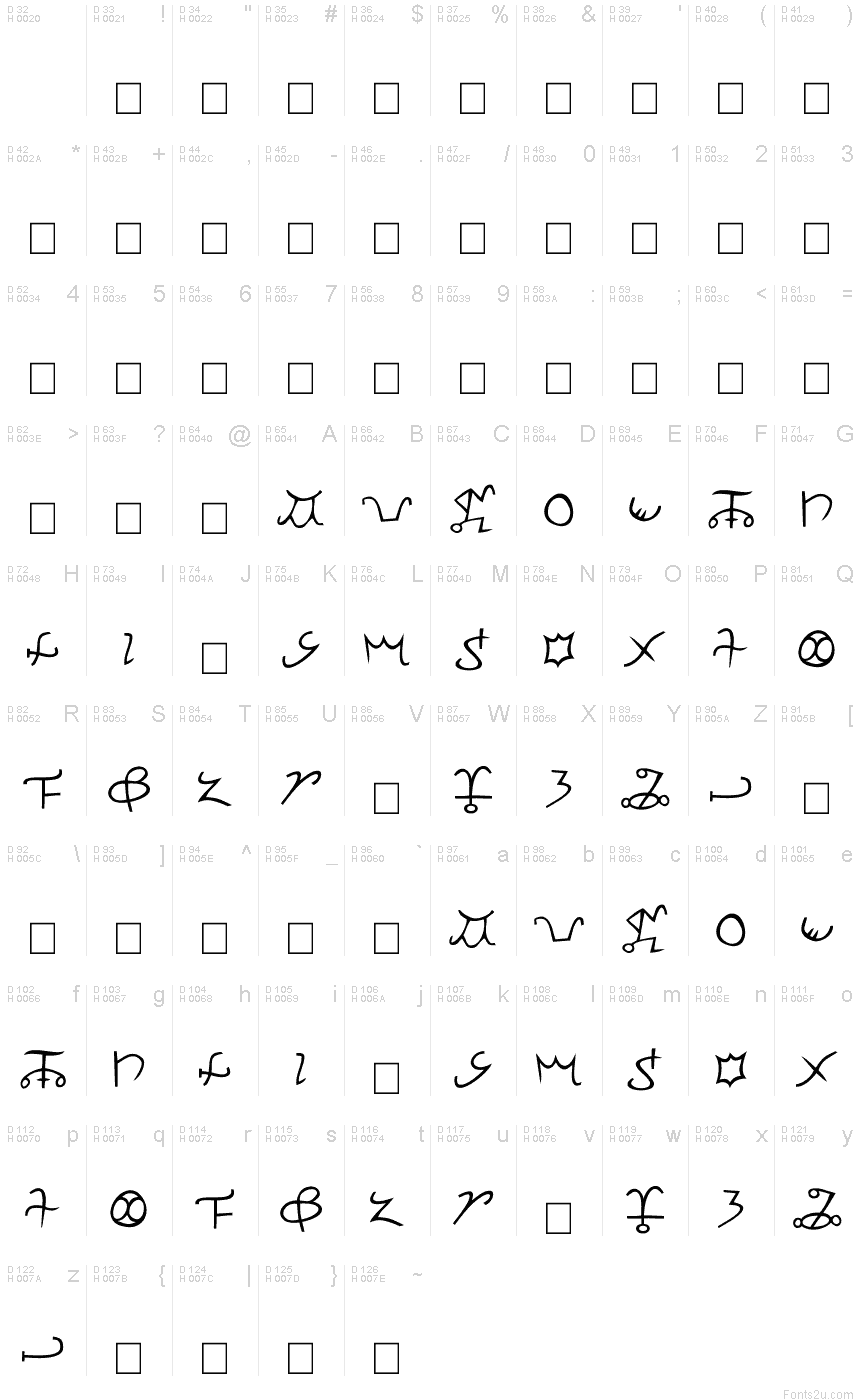Apollonian
TrueTypeBezplatný
- Akcenty (částečné)
- Euro
Apollonian.ttf
Tagy
>Tabulka znaků
Prosím, použijte roletové menu ke shlédnutí různých tabulek znaků obsažených v tomto písmu.

Základní informace o písmu
Informace o autorských právech
© 2002 Daniel U. Thibault. All Rights Reserved.
Rodina písma
Apollonian
Podrodina písma
Regular
Jednoznačné označení podrodiny
Urhixidur:Apollonian Regular:2002
Celý název písma
Apollonian
Verze tabulky názvu
Version 1.00; 2002 August 28
Postscriptový název písma
Apollonian
Výrobce
Designer
Daniel U. Thibault
Popis
Apollonian 2002 1.00
A late-medieval secret alphabet which has been recorded in a number of versions, usually with a Greek mapping (e.g. Blaise de Vignère's «Traité des chiffres», 1586). Though traditionally identified as the script of Apollonius of Tyana, there is no evidence to substantiate this claim.
Apollonius of Tyana was the most famous philosopher of the Greco-Roman world of the first century A.D. He devoted the major part of his long life to the purification of the many cults of the Roman Empire and to the instruction of the ministers and priests of its religions. A well-travelled contemporary of Jesus Christ, many "wonders" and "miracles" were consigned by his biographer, Flavius Philostratus (who wrote his Life of Apollonius circa 220 A.D.), fodder for the long-running theological debate on the nature of miracles.
The glyphs are taken from the «Dictionary of Occult, Hermetic and Alchemical Sigils»
by Fred Gettings (1981). This font supplies a Greek mapping in addition to a Latin one (with Chi mapped to C, Eta to H, Theta to Q, Upsilon to U, Omega to W, Psi to Y). There is no J nor V.
A late-medieval secret alphabet which has been recorded in a number of versions, usually with a Greek mapping (e.g. Blaise de Vignère's «Traité des chiffres», 1586). Though traditionally identified as the script of Apollonius of Tyana, there is no evidence to substantiate this claim.
Apollonius of Tyana was the most famous philosopher of the Greco-Roman world of the first century A.D. He devoted the major part of his long life to the purification of the many cults of the Roman Empire and to the instruction of the ministers and priests of its religions. A well-travelled contemporary of Jesus Christ, many "wonders" and "miracles" were consigned by his biographer, Flavius Philostratus (who wrote his Life of Apollonius circa 220 A.D.), fodder for the long-running theological debate on the nature of miracles.
The glyphs are taken from the «Dictionary of Occult, Hermetic and Alchemical Sigils»
by Fred Gettings (1981). This font supplies a Greek mapping in addition to a Latin one (with Chi mapped to C, Eta to H, Theta to Q, Upsilon to U, Omega to W, Psi to Y). There is no J nor V.
Rozšířené informace o písmu
Podporované platformy
PlatformaKódování
UnicodeUnicode 1.0 sémantika
MacintoshZápadní (roman)
MicrosoftPouze BMP Unicode
Podrobnosti o písmu
Vytvořeno2002-08-28
Revize1
Počet znaků273
Jednotek na Em2048
Práva pro vkládáníVložení povoleno pro editování (změnu)
Rodinná třídaBez klasifikace
VáhaStředně tenké
ŠířkaStředné (normální)
Mac styleTučné
SměrJen znaky směrovány zleva doprava + obsahují neutrály
VzorekNormální
VelikostRůzná